.gif)

Historic Roads in the National Park System
MENU
Understanding and Managing Historic Park Roads
|
Historic Roads in the National Park System
|

|
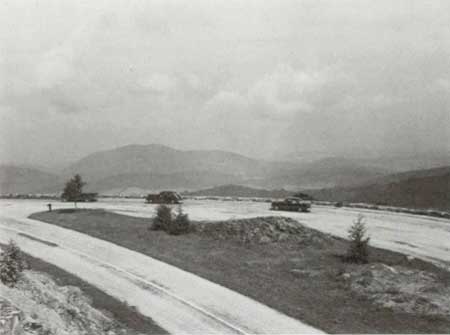
|
| Fig. 27. This turnout near Swift Run Gap at Shenandoah exhibited some of the classic elements of 1930s park road design, the easy curvilinear shapes of the road, planted island, and turnout; the palette of natural materials in the curbing and stone guardrail, and the manner in which the stonework blends with the onsite bedrock. The views from Skyline Drive were an integral part of the Shenandoah experience, and perhaps the most significant aspect of that road. (National Archives, Record Group 30) |
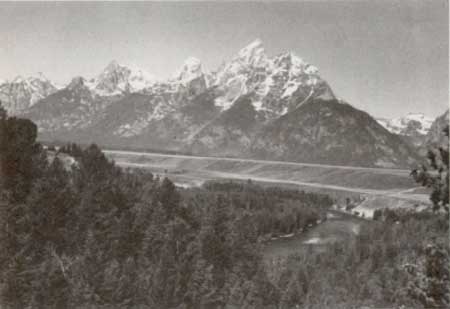
|
| Fig. 28. Specific vistas in national parks have become part of the collective scenic heritage of Americans. Photographer Ansel Adams made famous this view of the Teetons from the Snake River overlook. The presentation of this type of feature from the road can be a significant characteristic of the road. (NPS photo by Laura E. Soulliére) |
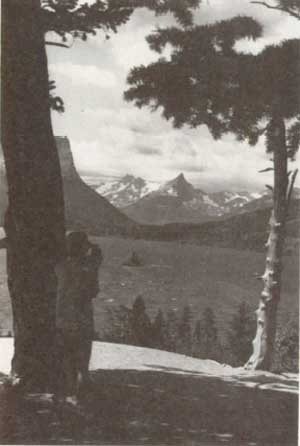
|
| Fig. 29. Other vistas along historic park roads provide opportunities to view the characteristic landscape of national parks. Here a visitor photographs Wild Goose Island and Saint Mary's Lake at Glacier National Park. Early design philosophy in laying out park roads stressed allowing the visitor to perceive the variety of scenic and natural resources available in the park landscape. (NPS photo by Laura E. Soulliére) |
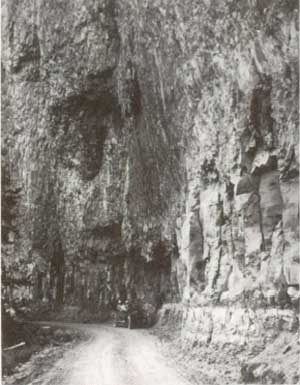
|
| Fig. 30. Integreating the roadway with natural features, such as this cliff face of columnar jointing along the Tower Fall roadway at Yellowstone, proved a challenge to the roadbuilders. At the same time the placement of the road at the base of the overhanging cliff brought visitors into close physical contact with some of Yellowston's geology. (National Archives, Record Group 79) |
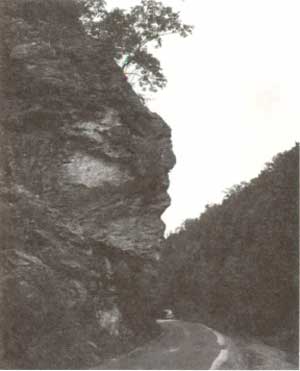
|
| Fig. 31. Natural features often received place names such as this one — Indian Head at Great Smoky Mountains National Park. Again, having the autotourist in such close contact with the park's features, contributed to a sense of awe wtih the scenic wonders. (National Archives, Record Group 30) |
NEXT >>>
Last Modified: Mon, Aug 23 2004 10:00:00 pm PDT
http://www.cr.nps.gov/history/online_books/harrison2/shsi2.htm
![]()
 Top
Top